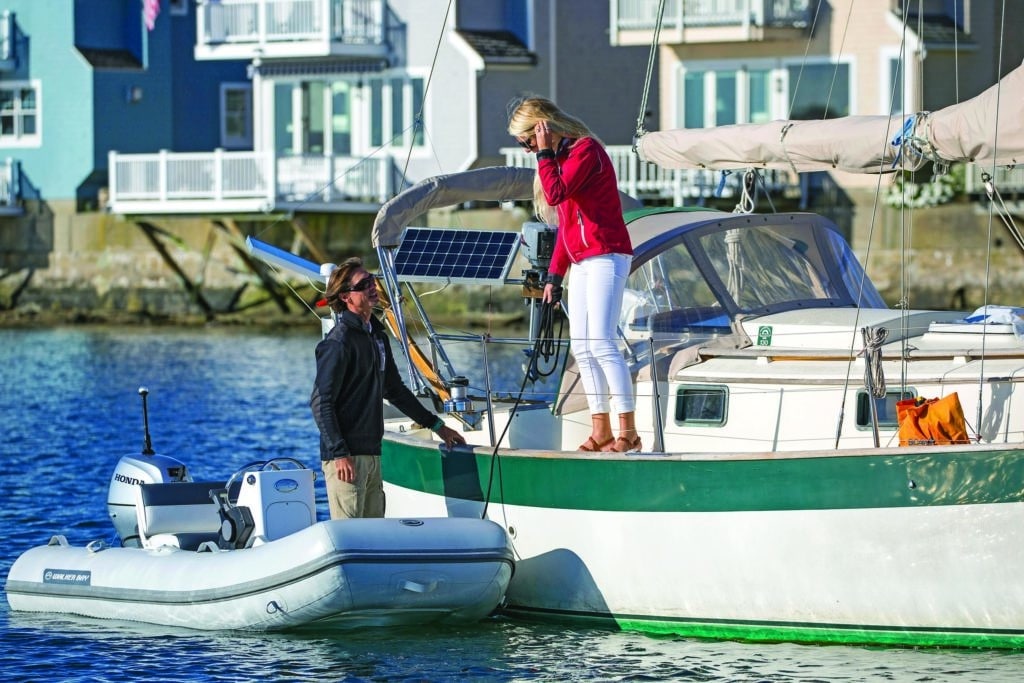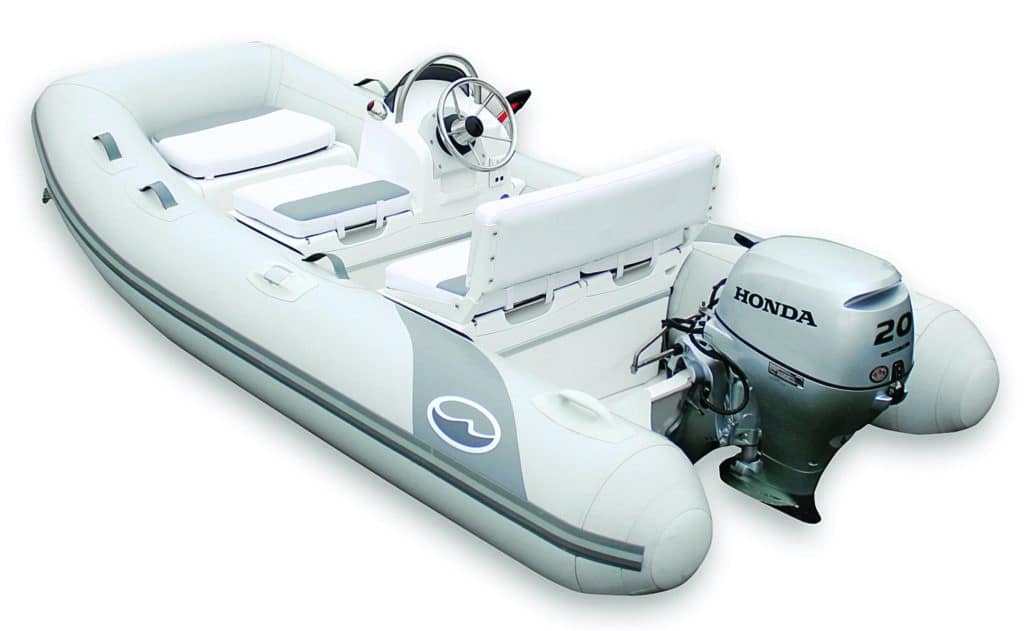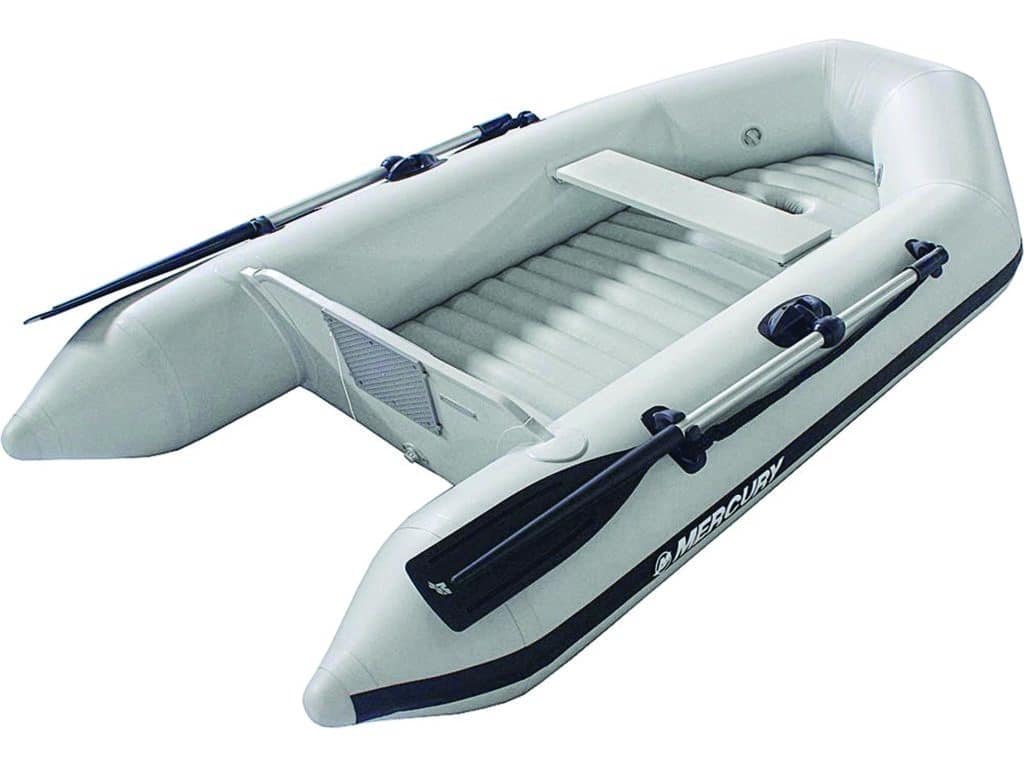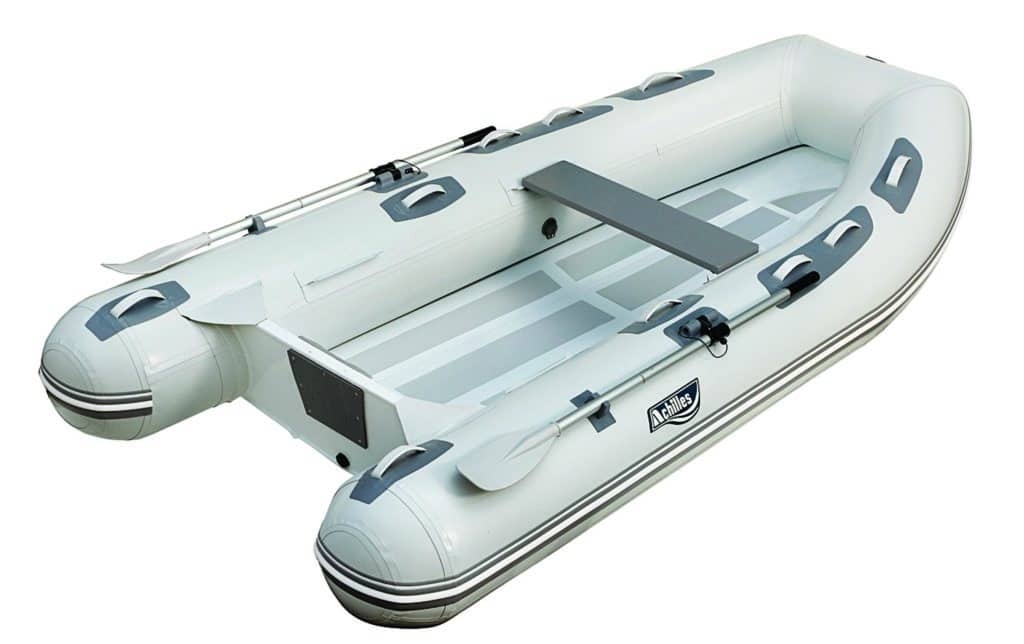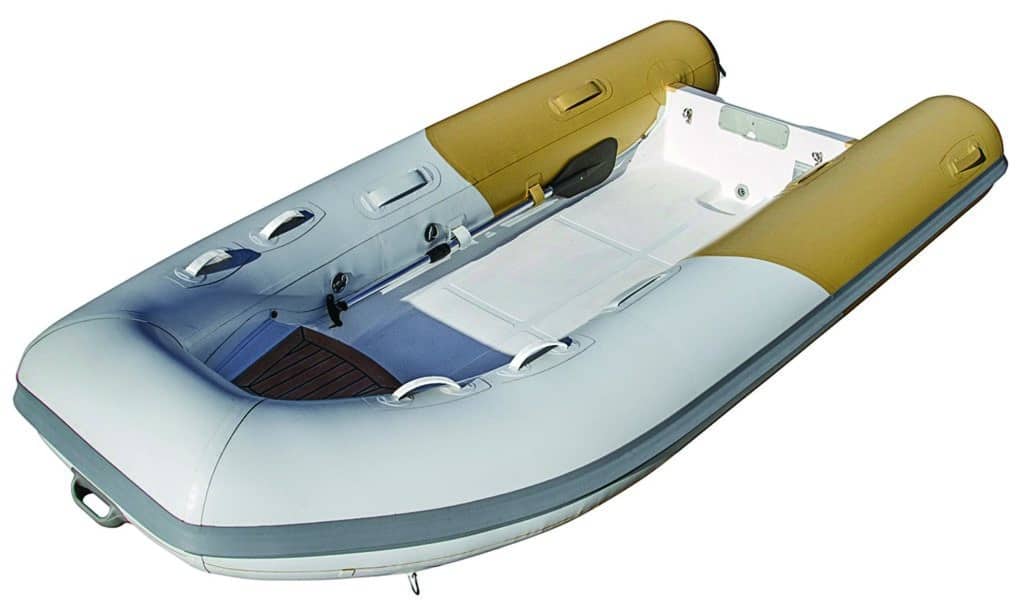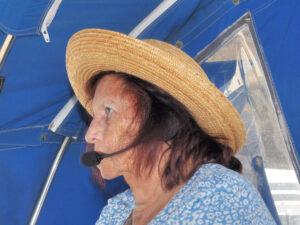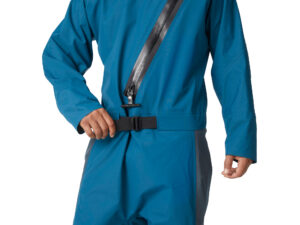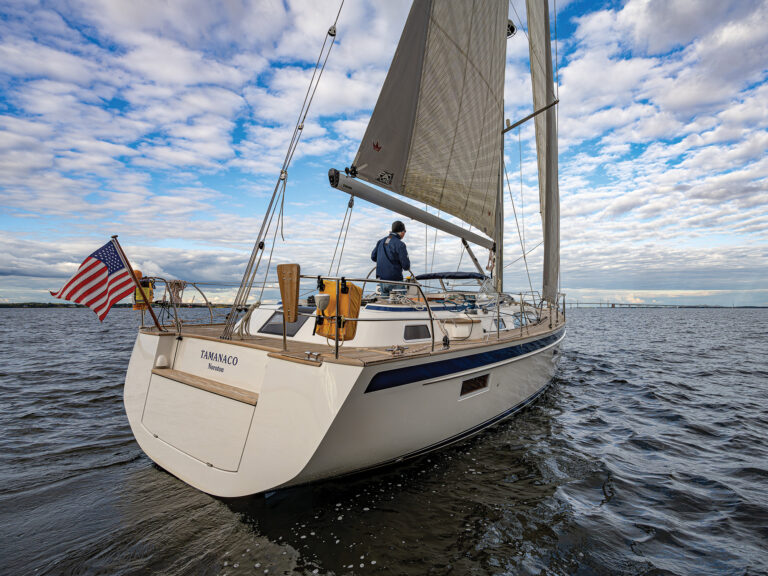Choosing an inflatable tender to bring cruising is not a decision to take lightly — the boat will be your gear and provisions hauler, not to mention your ticket to shore leave and exploring landfalls. At the recent fall boat shows, I had the opportunity to check out what’s new from several boat manufacturers, and to ask the experts for their tips for cruisers making their dinghy decision. “The way to begin when selecting a dinghy is to understand your needs and limitations,” says Ken Morse, marketing manager for Defender (defender.com), a major retailer for inflatable boats. Assuming you’ll be taking the tender cruising (not just using it locally to go, say, back and forth to a mooring), important considerations include expected crew size and physical ability, your cruising style, the type of outboard engine you want and, perhaps most important, how you plan to stow the boat. In general, you need to decide what size boat, what type of fabric, what type of floor and what additional features you might like, and depending on your budget, compromise in a few of these areas.
For recreational inflatable boats, fabric choices are either PVC or CSM/Hypalon, and both fabrics have their pros and cons. PVC boats are often less expensive, lighter, and easier to fold up and store. “The higher-end PVC boats, primarily from Zodiac and now a few other companies, are being constructed with a welded-seam technique, which cuts down tremendously on production time and material costs, as glues and solvents can be very expensive,” says Adam Fry, product specialist at the Inflatable Boat Center (inflatableboats.com) in Portland, Oregon. Manufacturers including Mercury, Defender, West Marine and Zodiac all have a line of PVC tenders.
CSM fabric is commonly referred to using the trademarked name Hypalon. Although DuPont ended production of the material in 2010, similar fabrics are produced today by other manufacturers. In general, CSM is a more UV-, chemical- and chafe-resistant fabric, and the seams are glued by hand, which is one reason they are more expensive.
“If you live up north, use a UV blocker such as 303 Aerospace Protectant and cover your boat; either material should be fine,” Morse says. “If you’re traveling south and planning on a visit to the tropics, you should go with CSM.”
Fry agrees and adds: “CSM boats can cost as much as double that of a PVC equivalent. If the user is going to abuse the boat and only expects five years from it, it makes sense to buy a PVC boat. Both CSM and PVC boats can last 25 years or more, but very few buy with that kind of longevity in mind.”
What’s Underfoot?
Deciding what type of inflatable boat construction you want really depends on your cruising style, crew size and planned stowage spot. Inflatables can be broken down into two general categories: soft bottom, which includes roll-up, high-pressure and panel floors, and rigid inflatable boats (RIBs), which can have either fiberglass or aluminum hulls.
“The most basic soft-bottom boats include slat-floor models that are extremely easy to deflate, roll up and stow,” Morse says. “They generally weigh very little and are economical, basic transportation. They do not, however, have keels, and the fabric bottoms are not designed for standing up. The lack of a keel also makes towing difficult, since these boats do not track very well.” There are models of PVC slatted-floor roll-up inflatables that can be purchased for less than $1,000.
If you’re looking for more performance but still want a tender that’s lightweight and easy to stow, take a look at models with high-pressure or panel floors. High-pressure air-floor tenders typically have an inflatable keel, which helps the boat track better. Larger models of both high-pressure air floors and ones with panels are usually able to plane.
“Other than the method of storage, a roll-up boat can be half the weight of an equivalent-size RIB,” says Fry. “So for those launching from the foredeck and/or beaching in areas with a large tidal change, the lighter-weight boat will be easier to deal with when having to physically move it. The trade-off is that it can be slower and less substantial for distance exploring. A RIB, on the other hand, will allow for farther transits with speed and comfort.”
RIBs have become a favorite among cruising sailors due to their performance and versatility. The solid fiberglass or aluminum bottom provides stable footing and is suited to landing on a beach or rocky shore without fear of puncturing the boat. Aluminum-hulled RIBs are rapidly gaining popularity due to their significant weight savings over fiberglass hulls.
“Cruisers who need to regularly carry four adults usually look to purchase a boat in the 10-foot or larger lengths,” says Morse. Generally speaking, a 10-foot or larger inflatable tender is easier to handle than a smaller one. Bigger boats can plane at lower speeds, and larger tube diameters provide a drier ride.
A major consideration with a RIB is where it’s stowed on passage. If you plan to secure your RIB on the foredeck, keep in mind the ability of your crew and the space available. For sailors who lack space but still want a RIB, some manufacturers, including West Marine, Walker Bay and Zodiac, offer RIBs with a hinged, folding transom that can store nearly flat.
“The weight of the inflatable, the motor weight, and horsepower restrictions, along with the boat’s deployed and stowed dimensions, are elements that are critical to making the right selection,” says Morse. “The whole point of cruising is to be safe and have fun, so deploying and stowing your dinghy should not be stressful, dangerous or a challenge to the crew’s physical capabilities.” Experienced cruisers will tell you that once you leave the dock, your dinghy is your car, so it’s worth doing your homework ahead of time and choosing wisely.
Jen Brett is CW’s senior editor.
